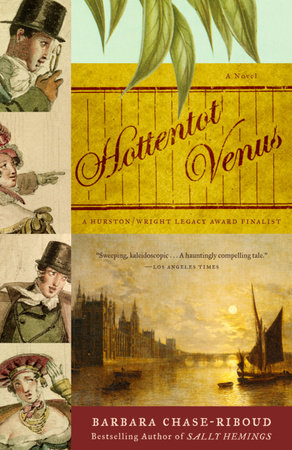READERS GUIDE
The introduction, discussion questions, and author biography that follow are intended to enhance your reading group’s discussion of Barbara Chase-Riboud’s haunting story
Hottentot Venus.
Introduction
Barbara Chase-Riboud’s previous historical novels won her critical praise and established her as a writer who daringly transforms the hidden truths of the past into compelling fiction. In
Hottentot Venus, Chase-Riboud recounts the tragic life of Sarah Baartman, re-creating in vivid, shocking detail the racism and sexism at the heart of European imperialism.
Born in the colony of Good Hope, South Africa, in 1789, Sarah Baartman was taken to London at the age of twenty by an English surgeon, who promised her fame and fortune. Dubbed the “Hottentot Venus,” she was paraded naked in Piccadilly in a freak-show exhibition and subjected to the unabashed stares and crude comments of the British public, which resulted in a sensational trial for her custody by British abolitionists. Soon afterward, however, Baartman’s keeper—who may have been her husband—sold her to a French circus owner. In 1814, her new owner took her to Paris as part of an exotic animal circus to be displayed to French high society. Baartman endured unconscionable exploitation and cruelty as medical experts and leading scientists touted her as an example of primitive evolution because of her genital “apron” and her prominent buttocks. Upon her death in 1816, she was publicly dissected and her brains, skeleton, and genitals were consigned to a French museum. In 2002, after eight years of legal negotiations between the French and South African governments, Baartman’s remains were finally returned to South Africa for proper burial.
In
Hottentot Venus, Barbara Chase-Riboud evokes this strange and moving story in the voices of Baartman and her contemporaries, combining years of research with the sensitivity and perceptions of a masterful storyteller to bring the story to life.
Questions and Topics for Discussion
1. What was the role of missionaries during this period in African history? How does Reverend Freehouseland’s influence on Sarah actually contribute to her remaining a slave, even though he legally “freed” her from slavery?
2. What role does faith play in Sarah’s life? How does religion shape her and the actions of those who exploit her?
3. During her time in London, Sarah forms a strong friendship with Princess Caroline, a dwarf who is also on display at the 225 Piccadilly freak show. How does Caroline’s death foreshadow Sarah’s? How else is Sarah’s posthumous fate foreshadowed in the course of the story?
4. Was Sarah right to be suspicious of Robert Wedderburn and his efforts to free her? How would Sarah’s story have been different if she had rebelled against Dunlop and Caesar and cooperated with Wedderburn?
5. In the first chapter Sarah describes the reactions of some of the people who come to see her on display in Paris. Why do women torment her more than men? Why is pity more painful for Sarah to endure than jeers and laughter?
6. How do the working class people of England react to the Hottentot Venus? How does their reaction differ from that of the French intelligentsia?
7. What kind of relationship does Sarah have with Alice Unicorn? In what ways were their early lives similar? What are the paradoxes in their relationship?
8. Discuss the plight of women during this period in history. How does Sarah’s marriage to Alexander Dunlop change her life? How does her position in society compare to that of Alice’s?
9. How does Dunlop manipulate Sarah throughout the story? What power does he have over her?
10. How do the various characters (Dunlop, Caesar, Réaux, Cuvier, etc.) justify to themselves and the public their horrific treatment of Sarah? Do they all see her as less than human?
11. How does the changing of Sarah’s name–from Ssehura to Saartjie to Hottentot Venus–rob her of her identity and contribute to the mythology surrounding her?
12. Sarah did not receive a proper burial until 2002 when the French government agreed to return her to South Africa. Why did it take 150 years for this to happen?
About this Author
Barbara Chase-Riboud is a Carl Sandburg Prize-winning poet and the prize-winning author of four acclaimed, widely translated historical novels, the bestselling
Sally Hemings, Valide: A Novel of the Harem,
Echo of Lions (about the Amistad mutiny), and
The President’s Daughter. She is a winner of the Janet Heidinger Kafka Prize and received a knighthood in arts and letters from the French government in 1996. Chase-Riboud is also a renowned sculptor whose award-winning monuments grace Lower Manhattan. She is a rare living artist honored with a personal exhibition, “The Monument Drawings,” in the Metropolitan Museum of Art. Born and raised in Philadelphia, of Canadian American descent, she is the recipient of numerous fellowships and honorary degrees. She divides her time among Paris, Rome and the United States.
From the Hardcover edition.

